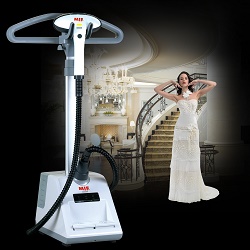Dishwasher Varieties
Dishwasher has long ceased to be considered a luxury item and now occupies a place of honor in almost every kitchen. The list of its advantages is quite large. The dishwasher is able to save any hostess from tedious manual labor, not to mention the fact that she washes any pollution much more qualitatively. There are different types of dishwashers, separating devices according to equipment and installation method, class, basic and additional options, as well as special features. About how these devices are, it is worth talking in more detail.
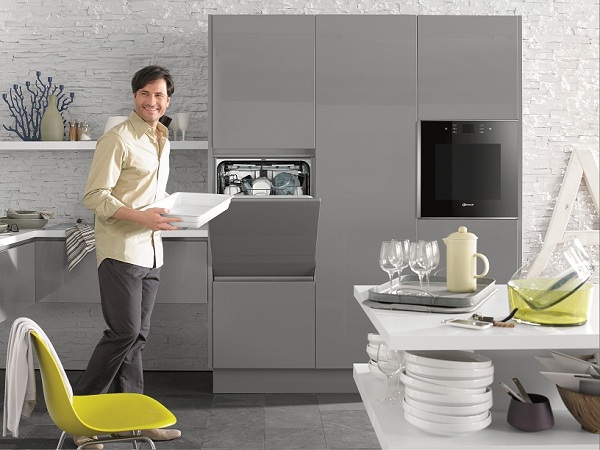
Content
type of instalation
In the modern market of household appliances there is a huge range of dishwashers from the most famous and less popular brands, which are primarily divided into two categories according to the type of installation. Dishwashers can be built-in and stand-alone. The cars of the first type most often include expensive premium-class devices that can be embedded under the table top, leaving the control panel and dishwasher door open. Also, these machines can be completely closed by the door of the kitchen, if the owners of the premises do not want to disturb the design of the kitchen.
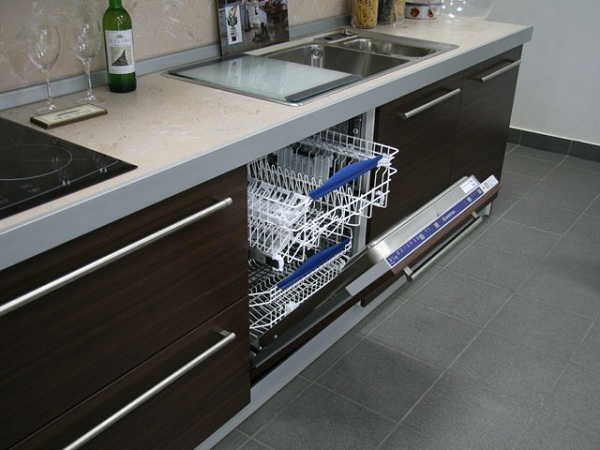
Built-in dishwasher
Free-standing dishwashers are purchased if the dimensions and other features of the kitchen do not provide for the ability to embed a dishwasher inside the kitchen unit. Such a device can be put in any suitable place of the room, but it should be borne in mind that it takes a lot of space and for this reason is only suitable for large kitchens.
Its main advantage is convenient access to the back panel in case of need to replace the part or disassemble the machine for repair.
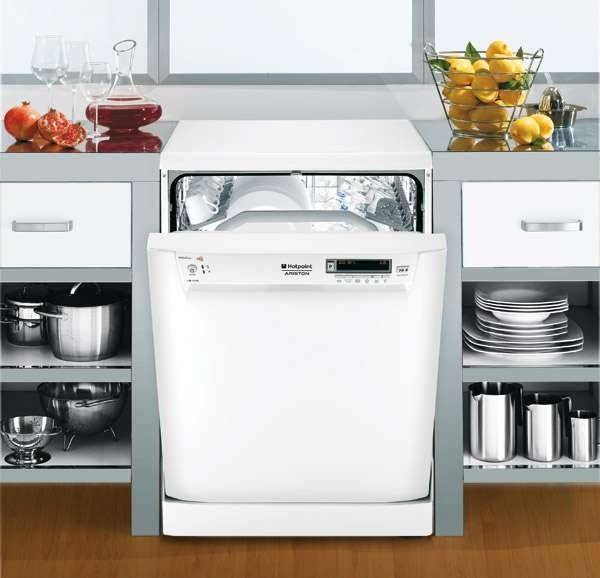
Freestanding dishwasher
Another type of dishwasher is a tabletop machine, which is ideal for even the smallest kitchen spaces. It can be simply put on the worktop of the tabletop or embedded in the kitchen cupboard of almost any size. It should be borne in mind that the desktop version is suitable mainly for small familieswhere there is no need to wash the dishes in too large quantities.
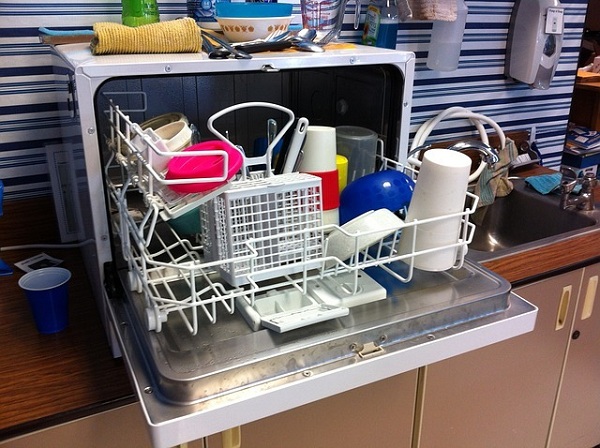
Tabletop Dishwasher
Each type has its pros and cons, so built-in dishwasher:
- fits perfectly into the interior of the kitchen and does not spoil the design of the room;
- it is difficult to repair, it can not be moved, such models are usually expensive.
Separate machine:
- can be installed anywhere and freely rearranged;
- sometimes does not fit into the interior of the kitchen space, takes a lot of space;
Desktop car:
- it is inexpensive, it can be freely transported and transported, it has compact dimensions, it can be built into wall cabinets;
- It is not suitable for a large family, a small amount of dishes will interfere, it is not economical enough.
Classes
Dishwasher types are also identified by category or class, each of which is assigned to any typewriter according to its characteristics.Usually there are three classes: A, B and C, which go in descending order and correspond to certain parameters of the machine. First of all, it is worth noting the standards water and electricity consumptionto pay attention to when buying a device. A dishwasher with a letter A marking is able to consume the least amount of electricity and will be the most economical compared to other analogues. In addition to this item, it is different and high levels of performance and washing dishes.
In the characteristics of each device usually indicate the water consumption, according to this parameter, dishwashers are divided into three types:
- high degree of efficiency (at a flow rate of 14-16 liters of water per wash cycle);
- medium economy (during one cycle 17-20 liters of water are consumed);
- uneconomic view (more than 25 liters of water in the washing process).
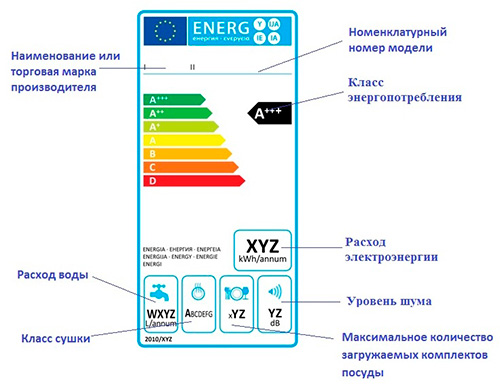
Dimensions and equipment
When it comes to which dishwashing machines are better suited for residential premises, do not forget about their size.. Typically, the size of such household appliances is divided into only two types: dishwashers can be full-sized (standard) or narrow.
You need to know that in the production of such devices, regardless of their brand, manufacturers always comply with recognized standards of height (85 cm) and depth (60 cm).
In this case, you can only talk about the differences in width, which is 450 mm for a narrow machine and 600 mm for a wide dishwasher. The first option is usually purchased for small kitchens and small families, the second fits perfectly into any space and accommodates more dishes.
All devices intended for washing dishes are equipped several sections different size. The upper compartment is usually designed for mugs, glasses, glasses and cutlery, and in the lower section can be placed plates, pans and pots. In expensive equipment, all compartments are adjusted depending on the desired level of tilt and height, for this reason, such machines are the most convenient.
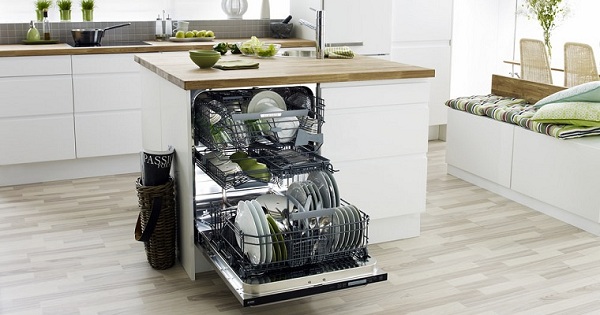
List of available programs
Classification of dishwashers can not be complete without the presence of basic and additional programs, buyers usually pay attention to the functionality in the first place. Standard devices can have from 10 to 13 programs,more affordable economy class models are able to offer only 6 options. In the list basic functions Different types of washing are usually included:
- Accelerated, in this case the whole cycle lasts no more than half an hour;
- Standard mode, designed for not very dirty dishes, heats water up to 55 degrees;
- Intensive mode is ideal for heavy pollution, washing lasts at least an hour;
- Soaking mode, suitable if the dishes were dried pieces of food.
In addition to the basic options in any car there are additional functions, including:
- delayed start and timer;
- regulation of water hardness;
- heated dishes;
- environmentally friendly washing;
- indicator to check the availability of water or special means;
- sound signals;
- rinse with warm water;
- half load mode;
- variable wash
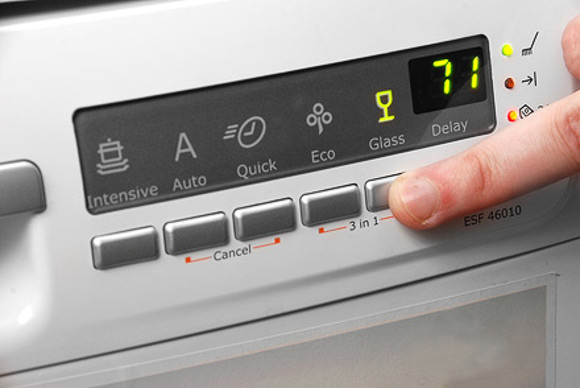
Drying dishes
A very important option is the drying of dishes after washing, which should be present in any standard machine. Typically, this mode is carried out in several ways and provides two technologies:
- hygienic condensation dryingin which all appliances are rinsed with very hot water, after which it evaporates from their surface;
- active turbo-drying, giving a better result due to the presence of a fan inside the device.
The first option is typical for low-cost models, it is characterized by a lower consumption of resources, but it takes more time. The second type of drying option can most often be seen in expensive devices, while it provides for greater power consumption.

/rating_off.png)






